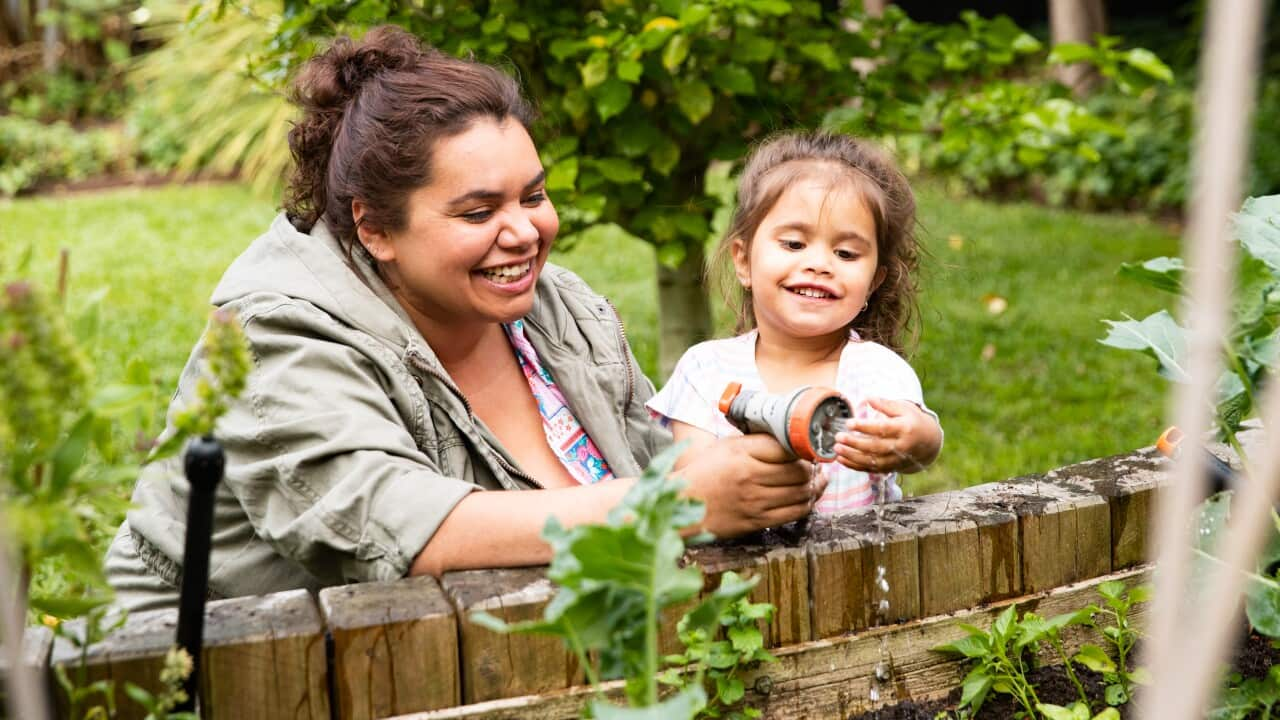Key Points
- There are an estimated quarter of a million unique species of mushroom in Australia.
- Identifying edible species of mushrooms in Australia requires caution and expertise.
- Fatal Death cap mushrooms are extremely difficult to distinguish from other wild mushrooms and can resemble edible species.
Kristy Barbara, from Sydney, recalls foraging mushrooms with her grandmother when she was a child.
“I remember when I was little, my grandmother used to take me and my sisters mushrooming. She used to take us to a place in Altona, in Victoria,” Ms Barbara says.
“My grandma immigrated to Australia from Malta in the late 1940s, and mushrooming was one of the joyous things she discovered in those early years in Australia,” she adds.
Mushroom foraging can have deep emotional or cultural connections for some migrants, as a social activity with family and friends, or to find food.
Diego Bonetto is a registered Foraging Instructor with Forestry New South Wales (Forestry Corporation of NSW).
He says in NSW it’s allowed to harvest mushrooms in state forests.

A mycologist examines Laccaria fungi in a Cool Temperate Rainforest. Credit: Jason Edwards/Getty Images
Professor Brett Summerell is the Chief Scientist and Director of Science, Education and Conservation at the Australian Institute of Botanical Science, at the
He says identifying edible species of mushrooms in Australia requires caution and expertise.
“The risk is that some of the mushrooms in Australia would be quite different from those that you might see in other parts of the world. So some are toxic, some have unpleasant effects...and could in some cases poison you quite severely,” Professor Summerell explains.
He adds that if you are unsure about the type of mushroom you're foraging, it's best to avoid it.
Death cap mushroom
Professor Summerell is also a plant pathologist and fungi expert and has helped describe over 120 new species of fungi and published over 150 journal articles and books.
He says some people have tragically died in Australia in recent years due to consuming the wrong types of mushrooms.
“If somebody was to mistakenly eat a Death Cap mushroom, there is a potential of dying from eating that mushroom... but it can range from needing liver transplants [to other severe health complications],” he warns.

Source: Moment RF / Simon McGill/Getty Images
Professor Summerell says this makes identifying poisonous species a matter of highly specialised knowledge.
'Difficult to identify'
Identifying fatal Death Cap mushrooms can be exceedingly challenging as they closely resemble edible species of wild mushrooms.
The Death Cap mushroom is found in Tasmania, Victoria, South Australia and the Australian Capital Territory.
“There are also some native species which look like an oyster mushroom, particularly the ghost mushroom, and they can be quite nasty and if you eat them you may have a nasty episode of nausea, diarrhoea, stomach complaints that could end up sending you to hospital,” Professor Summerell explains.
In Tasmania, Cortinarius eartoxicus is known to cause kidney failure, necessitating dialysis.
Similar varieties may also exist in Victoria, although they have not been formally identified yet.
Therefore, there's nothing in particular that you can see in a mushroom that will tell you that this is clearly safe to eat.
Mr Summerell further advises against picking mushrooms that are decaying.
“The quality of the mushroom can be important. If it has started to break down and to decay, sometimes you can get bacterial infections in your stomach, which can cause a gastrointestinal problem."
Hence it’s important to go into the forest with an expert.

Mushroom - Pixabay Source: Pixabay
The cooler and wetter weather is perfect for mushrooms to grow in the wild.
“The mushroom season starts around mid-March and it goes to mid-June, depending on conditions, depending on locations,” explained Mr Bonetto.
In Victoria, it starts a little bit earlier, in New South Wales [and South Australia] a bit later,” he says.
Different rules and regulations in each state and territory
Each state and territory in Australia has different regulations regarding foraging mushrooms, and it's important to be aware of these before venturing into the forest, Mr Bonetto suggests.
“In , we are allowed to harvest pine mushrooms in state forests, but that is not the case in other states.
In Western Australia, you are not allowed to harvest mushrooms, whether they're native or exotics. In , you are not allowed; in it's frowned upon."

Gilled Fungi, Amanita Ochrophylla, on the forest floor. Credit: Jason Edwards/Getty Images
“If you have a private property or if you have a friends with the property, then you can harvest mushrooms, without any regulation applying to you,” Mr Bonetto explains.
If this podcast raises health concerns for you or for someone you know about consuming mushrooms, call the from anywhere in Australia on 131 126.
For life-threatening symptoms, call 000.














